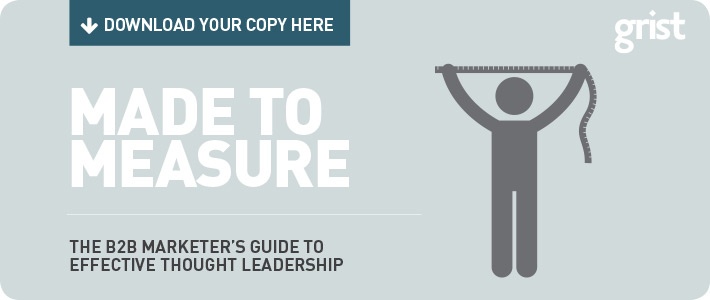Been there, done that… but didn’t quite get the T-shirt, or more accurately, didn’t get the desired response. That’s sometimes the response we get from clients when recommending survey-based marketing campaigns.
Despite the many benefits of a B2B survey as a marketing tool, clients sometimes don’t believe surveys will get enough pick-up to be worthwhile.
Their perception seems based largely on personal or anecdotal experience, rather than any solid business case. They assume that the exercise will be as pointless as filling in a feedback form after a mediocre meal.
Survey pitfalls
When we explore the reasons for their scepticism, we often find they’ve attempted to survey their own customers in the past, using a basic tool like SurveyMonkey. Invariably, they’ve been disappointed with the results.
There are several problems with this approach.
First, internal sales and customer databases are rarely kept up to date. They’re also unlikely to be representative, as they’re made up of individuals already known to the company in question. By definition, this is a ‘skewed’ sample.
Then there’s the questionnaire itself. Without the right approach, the survey is unlikely to prove compelling to the target audience.
But perhaps the biggest barrier is independence and anonymity – or the lack of it. Respondents may worry that their answers can be tracked back to them or seen by the company running the survey. This will put some of them off participating, which hits response rates significantly. Others may provide the answers they think the company wants them to, preventing an accurate view of the issue you’re researching, leading to misleading results.
A genuine thought leadership survey is a different beast. With the right approach, you can be 100% confident of reaching enough of the right respondents to inform robust research.
So what’s the right approach?
Defining your survey sample
The first step is to make sure you understand your ‘sample’ – ie, who to speak to, and how many respondents you need, for a credible survey.
That means knowing what market researchers call your ‘universe’. So if you want to speak to IT decision-makers at UK enterprises (firms with over £500 million revenues and/or 1000+ employees): how many are there in the first place? And which sectors are they in?
The size and demographic make-up of your universe will determine what makes a representative sample. There are approximately 3,800 enterprise senior IT decision-makers in the UK, so you’d need to survey 100 of them to ensure a robust representation (assuming no desire to analyse any sub-sectors). This ‘rule of thumb’ provides data that is robust to levels of +/- 4 percentage points at 95% confidence levels.
And if 30% of them work at telco firms, then 30% of your respondents must be from that sector for the sample to be representative, and so on. But the more you want to analyse different sub-sectors, the larger the sample needs to be as you need robust data at the sub-sector level too.
Survey success factors
Once you know what your required sample is, here are five steps to help you reach it successfully.
- Get access to a quality database. Professional researchers invest time and effort in building and maintaining their databases. They regularly cleanse their data to keep it up to date, and compare it to national statistics, to make sure it’s representative.
- Vet your respondents. Your questionnaire should begin by screening participants to check they have the right profile and expertise, and can answer your questions meaningfully.
- Design the questionnaire carefully. This is crucial. The first consideration is length: more than around 20 minutes will put people off. Mix up the question and response styles to vary the pace, keep respondents interested and make the process as painless as possible. Always translate your questionnaire for foreign-language markets, even if your respondents are likely to speak English. And test your results at 10% and 75% completion, to check that participants are completing the questionnaire and providing reasonable answers.
- Select the right interview method. What will suit your particular audience and information need: online, telephone, or a mix of the two? You might also want to consider supplementing your survey with some in-depth, face-to-face interviews, to drill further into the findings.
- Put yourself in their shoes. Your respondents need to be motivated to complete your questionnaire. You may offer incentives, but the best solution is to ensure the subject matter is truly compelling – get them thinking about relevant and interesting issues, and drive their enthusiasm to know the results and what it means for their business in future.
Get in touch
Surveys are one of our specialities here at Grist. We’ve helped numerous B2B brands to design and carry out thought leadership surveys, creating change and driving revenue.
By following the above steps, we can guarantee response rates. We know how to reach the required sample size – and of course, we’ve a commercial obligation to do so on your behalf.
We can also help you devise an integrated campaign, which will turn your survey into a lead-generating sales and marketing tool.
Drop us a line if you’d like to discuss how surveys could help make your campaigns more effective – and how to get them right.



